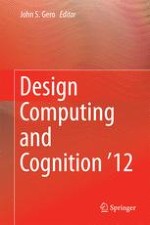2014 | OriginalPaper | Chapter
Mitigating Design Fixation Effects in Engineering Design Through Product Dissection Activities
Authors : Christine Toh, Scarlett Miller, Gül Kremer
Published in: Design Computing and Cognition '12
Publisher: Springer Netherlands
Activate our intelligent search to find suitable subject content or patents.
Select sections of text to find matching patents with Artificial Intelligence. powered by
Select sections of text to find additional relevant content using AI-assisted search. powered by
